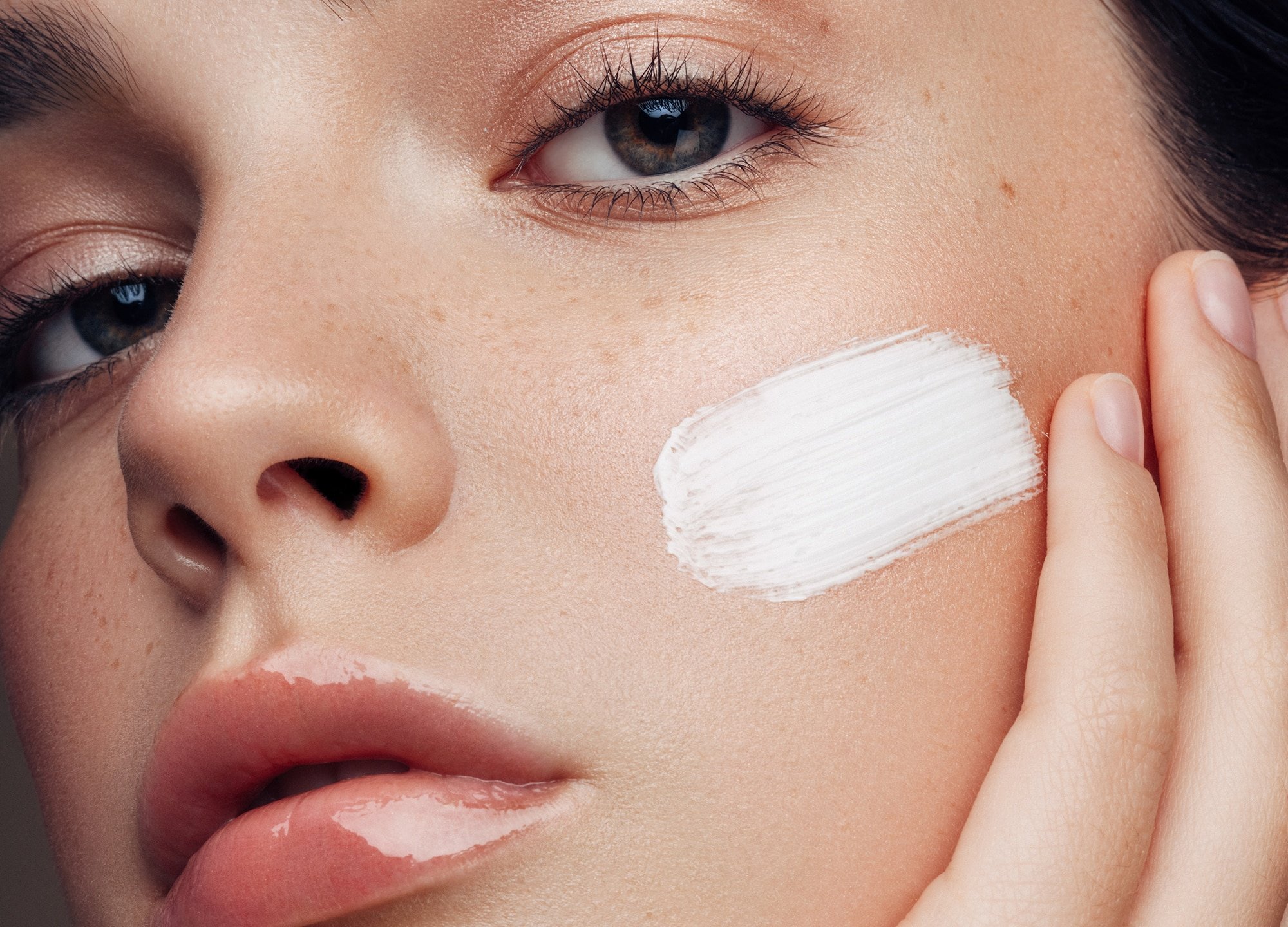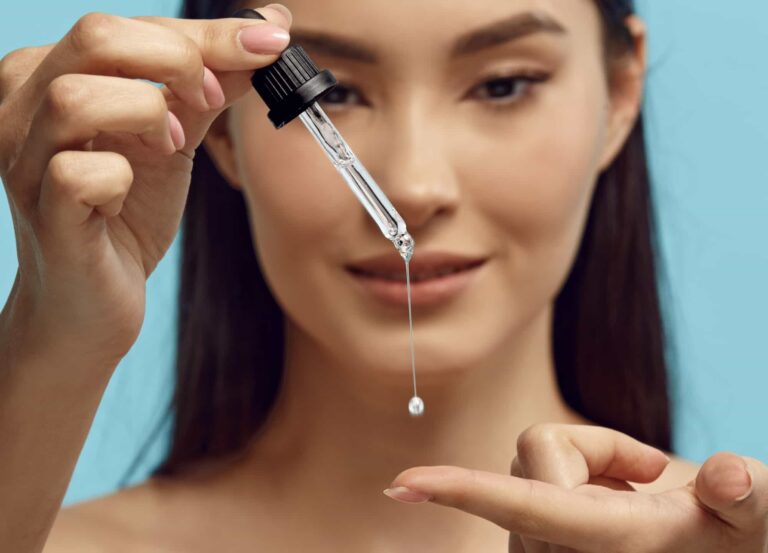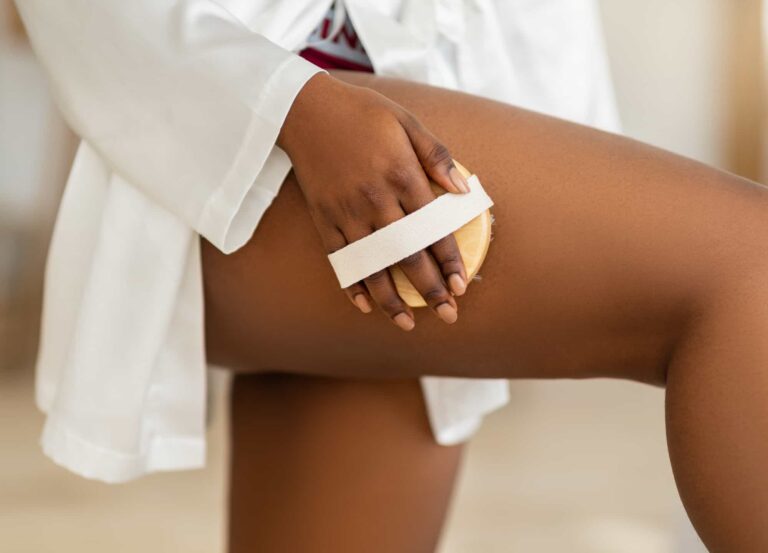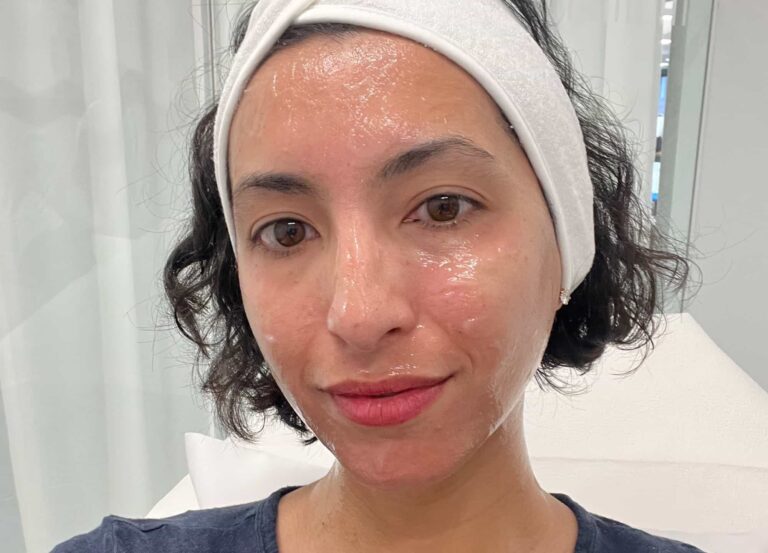Among skin care experts, retinol is known as the holy grail of complexion-boosting, anti-aging products. The vitamin A derivative aids in collagen production and cell turnover, helping bring forth new skin cells to reveal a healthier, glowier look, with a reduced appearance of fine lines. But in a cruel twist of fate, retinol can also act as the one product that wreaks total havoc on your skin. And retinol’s more potent relative, Retin-A (a brand name for topical tretinoin cream or retinoic acid, and typically available only via prescription), boasts an even more intense reaction from users—whether good or bad. While many are drawn to Retin-A for its uncanny ability to smooth wrinkles, diminish dark spots and discoloration, and reduce pimples and acne, this powerful exfoliant can be ultra-irritating. So in an effort to ensure you see only positive results from your retinoid use, we spoke to two dermatologists about how to use tretinoin.
1. Start at a lower strength
If you’ve never used Retin-A before, you probably don’t know how your skin will react to it. It’s better to play it safe and start with a thin layer (a pea-sized amount should be enough) of a lower-strength product, to prevent a potential skin freak-out. “Retin-A and other topical retinoids come in many different strengths and formulations,” explains New York City dermatologist Dr. Hadley Claire King. “Higher strengths can potentially be more irritating, and different formulations have different bases that can be more moisturizing or more drying.” A gel, for example, can be more drying than a cream, so reaching for a cream-based retin-A is advised if your skin is on the sensitive side. Retin-A is also available in concentrations ranging from 0.025% to 0.1%, so experimenting with a lower-level strength (within the 0.025% to 0.05% range) will lower your risk of developing skin irritation.
Related: Retinol vs. Vitamin C for Skincare: Know the Difference and What’s Right for You
2. How often to use Retin-A
Dermatologists agree that this is one of the most important rules when it comes to using Retin-A: don’t overdo it. When you are first starting to use a topical retinoid, Seattle dermatologist Dr. Sonia Lamel says, you should apply it just a few times a week. “Start by using it twice a week and add one day a week, every other week, until you can apply it nightly with no side effects,” she explains. “Then increase the strength and repeat the process.” This step is so important because it allows your skin to get accustomed to the ingredient, resulting in a complexion that reaps only the benefits of Retin-A rather than developing inflammation.
Additionally, Dr. King adds that if you do see a slight reaction (even after your skin seems to have adjusted to the ingredient), it’s okay to periodically take a night or two off—this won’t ruin the tolerance you’ve already built up.
3. Layer on the emollients
As the retinoid starts to work, cellular turnover is enhanced and water loss through the skin happens more quickly. Because of this, skin becomes vulnerable to dryness, so it’s important to use emollients to help prevent an excess loss of moisture and ease irritation. “I find ceramides to be particularly helpful for bolstering the skin-barrier function and preventing moisture loss,” says Dr. King. Emollient moisturizers can be applied after or even before retinoids as well as at other times during the day, if skin feels exceptionally dry. “[Applying the emollient beforehand] will moisturize dry skin and also slightly dilute the retinoid, which will make it less irritating, and then you can still apply more on top, if you’d like,” explains Dr. King. Try a product like CeraVe Moisturizing Cream ($16) when using Retin-A. The formula boasts hyaluronic acid and ceramides, to soothe the skin and restore its protective barrier so that it can better withstand irritants.
4. Steer clear of drying agents
Soaps and skin-care products with detergents or alcohol, such as certain toners, can strip the skin of its natural oils and moisture, making it more susceptible to irritating ingredients. Because retinoids already leave the skin vulnerable to drying out and flaking, it is important to avoid additional steps that will further dehydrate your complexion. “Use gentle soap substitutes, like the Dove Beauty Bar [$7] or Cetaphil Daily Facial Cleanser [$10], which will cleanse the skin without stripping it of its natural oils and moisture,” says Dr. King.
5. Be mindful of which products not to use with Retin-A
While we love alpha hydroxy acids (AHAs) and beta hydroxy acids (BHAs) for their exfoliating abilities, you should proceed with caution when combining these ingredients with Retin-A. “Some exfoliants and cleansers, such as AHAs and BHAs, can make the side effects of retinoids worse as they can compound cellular turnover,” says Dr. Lamel. “It’s best to see how your skin tolerates the retinoid before introducing these.” Dr. King points out that it’s OK to use these AHAs or BHAs along with your retinoid, if you’ve experimented with them and your skin tolerates it—but make the application times different. “Use [AHAs or BHAs] in the mornings and use the retinoid at bedtime,” she asserts.
Also, it’s important to note that some skin-care ingredients, like the benzoyl peroxide and salicylic acid in acne treatments, can essentially deactivate your Retin-A, making it borderline pointless to apply. “Benzoyl peroxide is a powerful antimicrobial that can oxidize your retinoid and make it less effective,” explains Dr. Lamel. “It’s best to avoid this when you apply your retinoid.”
Related: How to Make the Most of Acids in Your Skin Care Routine
6. Protect your skin during sun exposure
We cannot stress this enough: always wear sunscreen to prevent sunburns and sun damage. While you should be wearing sunscreen regardless of whether you’re using Retin-A, it’s especially important for retinoid users. “With the increased skin cell turnover [from Retin-A], sun sensitivity is increased,” says Dr. Lamel. “Wear a mineral-based sunscreen lotion every day, no matter what, that is separate from your makeup.” A good option is the EltaMD UV Clear Broad-Spectrum SPF 46 Sunscreen ($35); it’s oil-free, fragrance-free and noncomedogenic, making it safe for sensitive-skin users.
7. Stick with it
Unfortunately, retinoids don’t work overnight. And with the possible irritation, it can sometimes feel like your skin has gotten worse before you see any improvement at all. If this is the case, don’t give up on your Retin-A routine. “It typically takes a good six months of regular use to notice the benefits of using a retinoid,” says Dr. Lamel. So stick to these Retin-A tricks for the first few months, to keep irritation low and benefits high. You’ll be happy you did.











